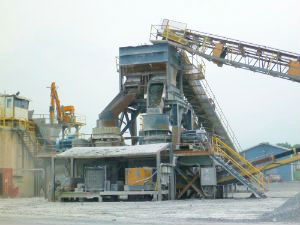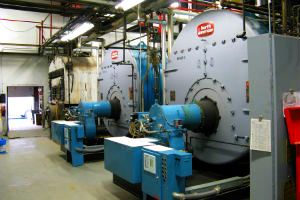
To minimize their impact on human health and the environment, industries, businesses and individuals in the State of Vermont are expected to comply with air pollution control regulations and with the requirements of any air pollution control permits that have been issued to them. One of the ways in which the Air Quality & Climate Division monitors compliance is by conducting on-site inspections of factories and businesses. The Compliance Section performs roughly 100 of these site visits per year. A facility usually receives minimal or no advance notice that an air pollution inspection is scheduled.

The physical appearance of the equipment and the thoroughness of written maintenance records can be an indicator of how well it is being maintained. Poorly maintained sources are more likely to malfunction and create excess emissions than are well maintained sources. If an inspector discovers air pollution violations or other problems, he or she will work with the facility to resolve the problems as soon as possible. On-site inspections focus on:
- The physical appearance of process equipment and related emission control devices.
- Current operating conditions, as indicated by any available montoring gages and the presence or absence of visible emissions or excessive odors.
- Usage and techniques employed to maximize efficiency of air quality control equipment.
- Thoroughness of recordkeeping related to air emissions control and facility operations.

Inspections are prioritized based, among other things, on the quantity of emissions and the past compliance history of the facility. Sources that emit a large quantity of emissions, that have a poor compliance history, or that have a newly issued permit are more likely to be inspected. Inspections targeting certain source types may also be performed because a new regulation affecting that type of source has been adopted. Although the primary purpose of an inspection is to determine if a facility is in compliance with air pollution regulations or permits, it frequently is an opportunity for the inspector to answer questions. If the facility is planning to make changes to its operation, the inspector can provide advice about the need for an amended air permit or ways to minimize emissions.

To assist facilities who are developing or updating operation and maintenance plans needed to show compliance with air pollution regulations and permits, the Division has developed a set of O&M Plan Guidelines. It should be noted that these guidelines do not address every possible situation, and are oriented toward air pollution control and not general facility maintenance. The Division reviews the actual O&M plans and discusses with the facility any revisions needed to ensure that the plan meets air pollution control requirements.
A summary of air pollution (and other) compliance information for a facility is available to the public on the US EPA sponsored Enforcement and Compliance History Online (ECHO) website. ECHO reports provide a snapshot of a facility's environmental record, showing dates and types of violations, as well as the State or Federal government's response.
